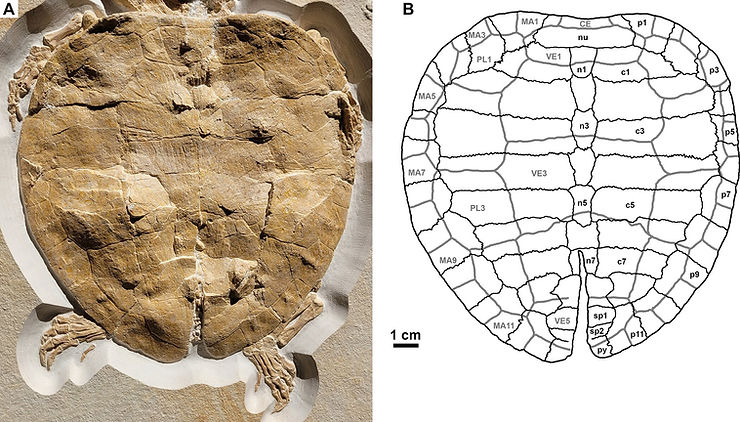By: Valentina Guo
In southern Germany, a surprisingly preserved sea turtle fossil has been found and gives information on how turtles came to live in more shallow marine areas.
When the turtle, which is said to be from Lower Bavaria, was uncovered by a private collector from a quarry near the German city of Painten, it was immediately noticed that it was flat as a pancake. The pancaked ancient sea turtle was discovered to have lived in the late Jurassic era, or the “age of dinosaurs,” between 252 million to 66 million years ago.
This fossil is declared the best fossil found of the Solnhofia parsonsi species, and is 9 inches long. This turtle species had huge heads, diving into shallow tropical seas in what is now known as Europe. “The very good preservation of the fossils in the layers of limestone can be explained by the environmental conditions at the time,” co-author and University of Tübingen paleoecologist Andreas Matzke said in a statement.
Though the first fossil of this species was found in the 1970s, the newfound pancaked fossil ““is the best preserved individual of this species,” said lead study author Felix Augustin, a Doctoral Candidate in the Department of Geosciences at the University of Tübingen in Germany. “It is the first that preserves the complete skull, the complete shell, and also all four complete limbs.”
The sea turtles today have elongated fins, or “rigid flippers to propel them through the ocean depths.” according to CNN News. But the fossil found of the Solnhofia parsonsi species had stumpy short fins. This is believed to be because the sea turtles from 150 million years ago lived in shallower areas compared to today.
The Dinosaur Museum in nearby Denkendorf exhibits Solnhofia parsonsi. Fossils like these give us materials on studying how they came to be deep sea creatures.











